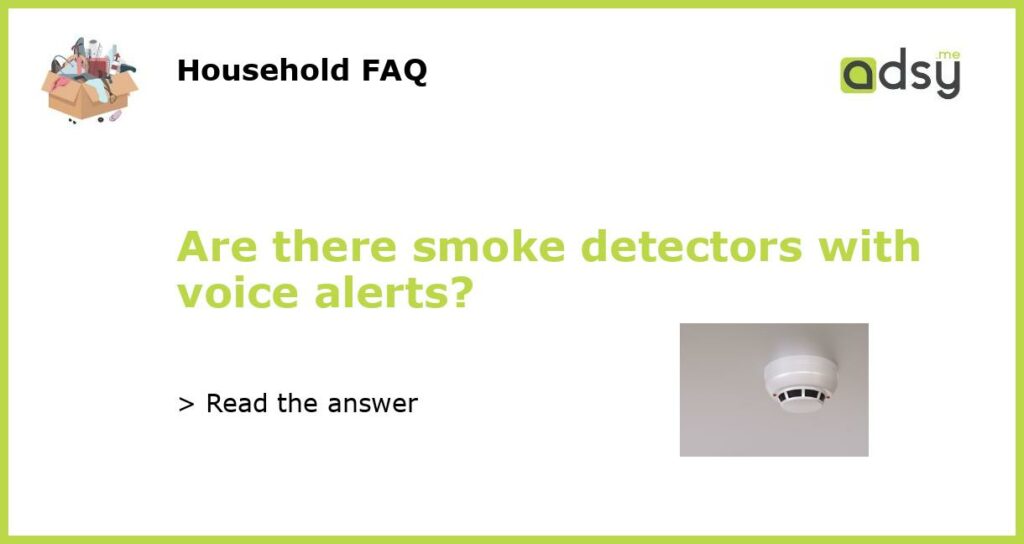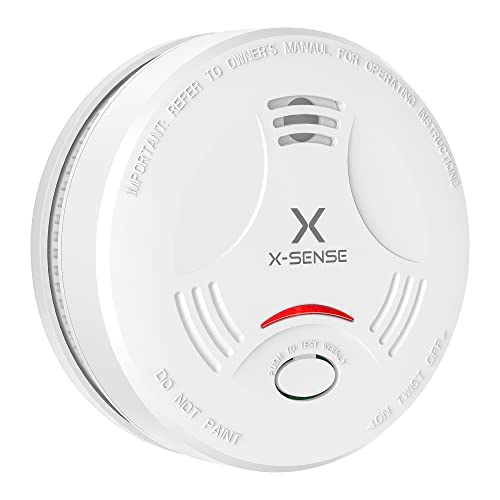Yes, there are smoke detectors with voice alerts
Smoke detectors are an essential safety measure in any home or building. They are designed to detect smoke and alert the residents of a potential fire hazard. While most smoke detectors use loud, high-pitched beeps or sirens as their alarm, there are also smoke detectors available with voice alerts. These voice-enabled smoke detectors provide an added layer of safety by not only alerting occupants to the presence of smoke but also providing specific information about the potential danger.
How do smoke detectors with voice alerts work?
Smoke detectors with voice alerts function in a similar manner to traditional smoke detectors. They are equipped with sensors that detect the presence of smoke or fire in the surrounding area. When smoke is detected, the smoke detector triggers an alarm, but instead of emitting a loud beep or siren, it activates a pre-recorded voice message that alerts occupants of the potential danger.
The voice alert can provide valuable information such as the location of the smoke or fire, the type of hazard, and instructions on evacuation or calling emergency services. This additional information can help occupants make quicker and more informed decisions, especially in situations where visibility may be limited or when a traditional alarm sound may not be enough to wake affected individuals.
The benefits of smoke detectors with voice alerts
Smoke detectors with voice alerts offer several advantages over traditional smoke detectors. Firstly, the voice alerts provide clear and specific information about the potential danger, allowing occupants to take appropriate action in a timely manner. This can be especially beneficial for children, elderly individuals, or those with hearing impairments who may have difficulty hearing or understanding a traditional alarm.
Secondly, the voice alerts can help to eliminate false alarms. Traditional smoke detectors can be triggered by cooking smoke or steam, leading to unnecessary panic or evacuation. With voice alerts, occupants can quickly assess whether the detected smoke is a genuine fire hazard or a false alarm, reducing unnecessary disruptions and ensuring that emergency services are only contacted when truly necessary.
Additionally, some smoke detectors with voice alerts also have additional features such as carbon monoxide detection or integration with smart home technology. These added features further enhance the safety and convenience of the smoke detector.
Popular smoke detectors with voice alerts
Several manufacturers offer smoke detectors with voice alerts, giving consumers a range of options to choose from. One popular option is the Nest Protect. The Nest Protect is a smart smoke and carbon monoxide detector that uses voice alerts to inform users of potential dangers. It can also send notifications to your smartphone and integrates with other Nest smart home devices for added convenience.
Another well-known brand offering smoke detectors with voice alerts is First Alert. Their Onelink Safe & Sound smoke and carbon monoxide alarm features a built-in speaker and voice commands controlled through a smartphone app. It also integrates with popular voice assistants like Amazon Alexa and Google Assistant.
Other manufacturers such as Kidde, Everspring, and X-Sense also offer smoke detectors with voice alerts. These options vary in terms of features, connectivity, and price, allowing consumers to find a smoke detector that suits their specific needs and budget.
Smoke detectors with voice alerts provide an enhanced level of safety by providing specific information about potential fire hazards. These voice-enabled smoke detectors offer clear instructions and information to occupants, helping them make informed decisions and take appropriate action during an emergency. With various options available from different manufacturers, consumers can choose a smoke detector with voice alerts that meets their individual requirements.






